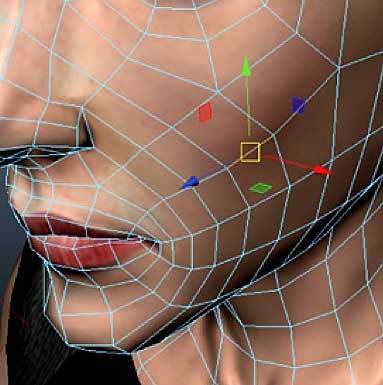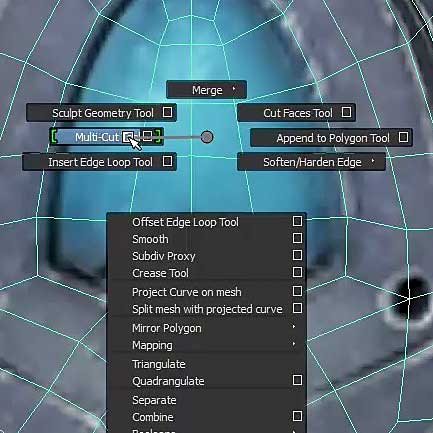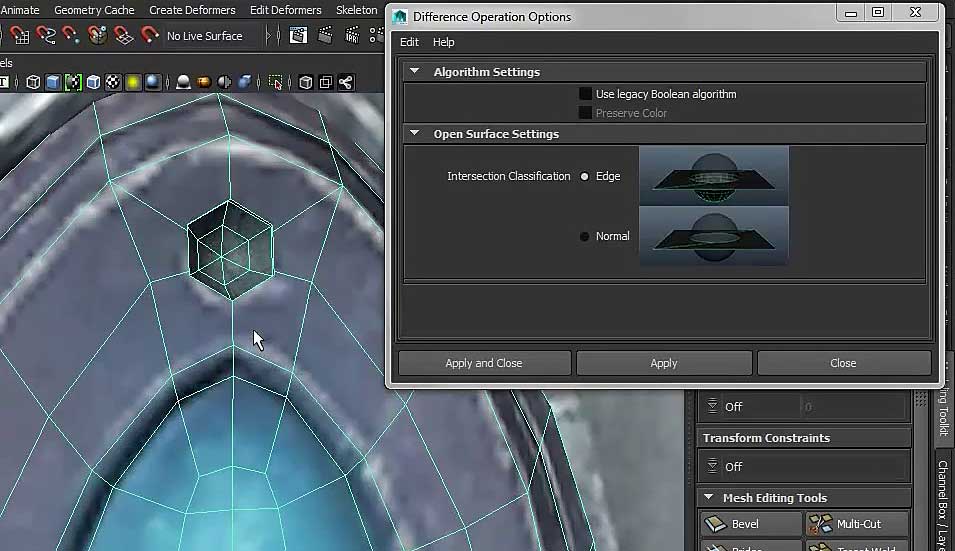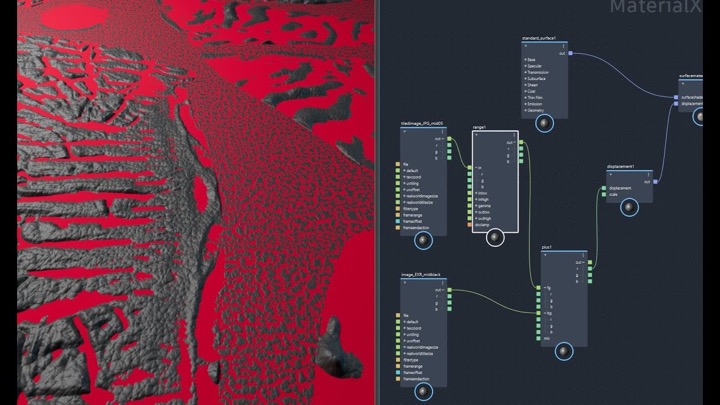Autodesk Technical Specialist Steven Roselle offers a sweeping overview of the newest modeling features that are incorporated into Maya 2015. Last week, Autodesk announced 2015 versions of all their content creation applications, including Maya, 3ds Max, MudBox, MotionBuilder and the ill-fated SoftImage.
Generally the modeling changes to Maya are really positive. Maya 2015 sees some tighter integration of the modeling toolkit, as well as some revisions to underlying core features. Check out Steven’s post covering some of the new Maya 2015 improvements.
Maya 2015 Preselection Highlighting
Preselection highlighting has existed in Maya for quite some time, but the idea was sweeter sounding than the implementation. Now in Maya 2015, preselection highlighting has a complete update making it much more functional.
[pullquote align=”left”]Modeling and UV’s had taken a bit of a back seat in past years, but in the last two releases we have seen some pretty significant improvements[/pullquote]In Maya 2015’s preselection highlighting, you no longer have to hover exactly over the component you are trying to select. Being in the vicinity will activate the highlighting.
You can now preview the soft selection as a preselection highlight. Hovering over the model with soft election projects the influence directly on the mesh, offering great feedback on the size and falloff of the soft selection’s settings.
Autodesk has incorporated a “lazy” selection. hovering over a component on the profile of an object will allow you to transform it, without actually directly selecting the component.
One other great addition are improvements to the premise of preselection highlighting is the symmetry function. You can now see the mirrored effect of highlights with soft selections on the mesh.
Symmetry
Symmetry in Maya works on proximity. If your model is asymmetrical beyond the tolerance that is set, you loose the ability to symmetrically transform your components. You can now reassign symmetry by selecting an edge in the center of the model and setting topology for it, bringing symmetry back to parts of the model that are asymmetrical.
Symmetry also works on modeling edits based on selections. Selection based operations such as extrude and bevel will respect the symmetry function in Maya.
Bevel Tool
Maya 2015 has a completely rewritten bevel tool. The previous bevel tool in Maya could only be used for certain situations, and was the result of years of neglect. The new Maya 2015 has a brand new bevel tool algorithm that works much more reliably and offers new parameters for creating and adjusting bevels.
MultiCut Tool
The MultiCut tool was always part of the modeling toolkit, but now it has a new home in the marking menu replacing the series of fiascos that were the Maya cutting tools (you know which ones).
The MultiCut tool can effectively replace the poly split tool, interactive split tool, cut faces/poly tool, and the insert edge loop tool, combining the functionality of all of those in one handy (and reliable) cutting tool.
The MultiCut as well as most of the polygon modeling tools have the new “edge flow” control, which will inherit the shape or curvature of the overall model when adding new edges.
Booleans
Maya 2015 works with boolean operations in a new way, making use of the Carve Library for better and more reliable booleans on polygonal options. One of the new options in the boolean tool is to make a hole rather than to carve out sections of the mesh.
Marking Menus
Much of the molding toolkit has been made redly accessible in the marking menus for Maya 2015. You can now access molding toolkit functions quickly without having to navigate over the the MTK panel.
New Selection Additions
Maya 2015 will now allow you to do “controlled” face path selections by double clicking. Double clicking a path in previous version of Maya worked to an extent, but now you are able to continue with double clicking to make more elaborate selections as you go. You can also switch over to the paint selection tools by holding the tab key to drag out a selection.
Swapping component selections gets a new conversion in “perimeter”, allowing you to convert a face selection to the election’s boundary edges.






